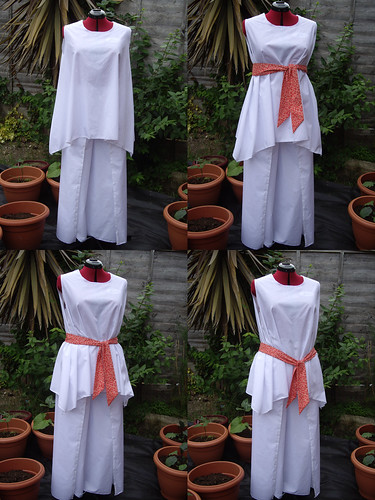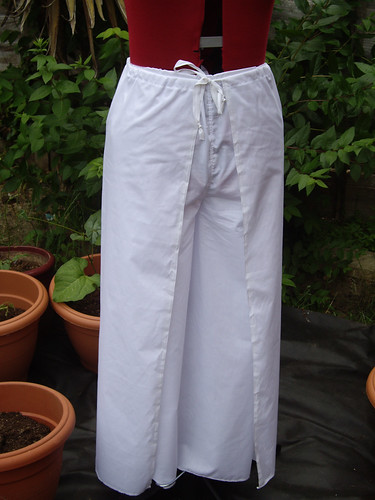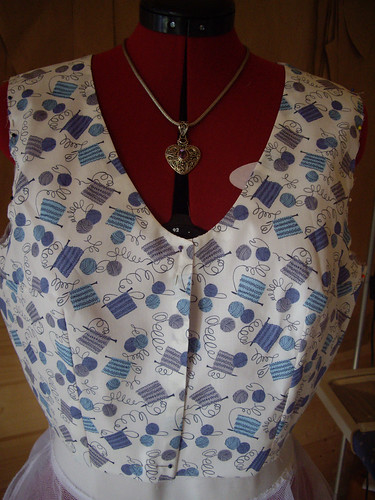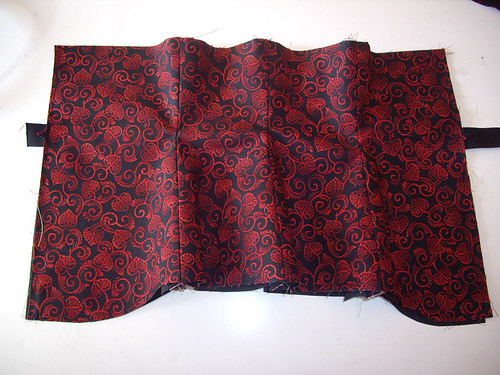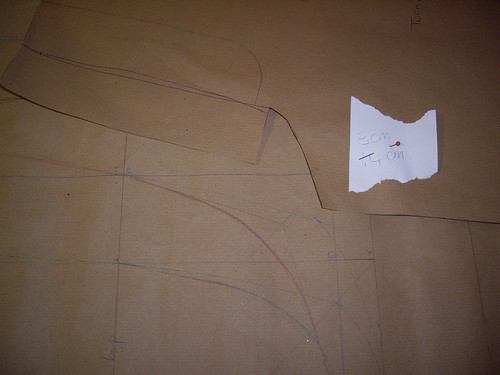This is Burda 7808.
(Information now only available in German, since the English site has merged with Burda Style and all the patterns are gone. *sigh*)
I bought the pattern yesterday because the weather’s gone mad, and I’m going to need some kind of loose summer dress so that I don’t inadvertently boil inside my own skin. Now I’m thinking through all the changes I’m going to need to make to the pattern before I actually start cutting fabric to make the dress.
For a start, I didn’t realise that there was a zip in the side seam. That’ll have to go. And then I’ll have to make the dress a little bit wider under the arms, so that I’ll have enough room to get it on and off over my head.
I don’t much like the larger collar, so I’ll probably make the little stand-up collar on the version with sleeves. I also want to increase the width of the sleeve head, so that I can make gathers at the shoulder to match the gathers at the cuff.
If I do make the sleeveless version, I’m definitely changing the way that they’ve applied the bias binding to the sleeve edges. I think the instructions given will make them much too bulky.
Oh, and I also want to add gathers to the back, so that it matches the front. Then I’ll make the ties much longer, and have them coming from the front panel rather than the back. A little ruffle of broderie anglais trim at the hem probably wouldn’t hurt either.
All of which makes me wonder why on earth I bothered to buy a pattern in the first place!
Actually, my answer to that is because I find that having a ready-made pattern to start off with is much easier than trying to draft something from scratch. I can look at the picture, the shape of the pattern pieces and the instructions, decide what I do and don’t like, and then make my changes confident that all the bits will still fit together in the end.
I’m going to try and make a start on this over the weekend, so hopefully photos will follow soon.



